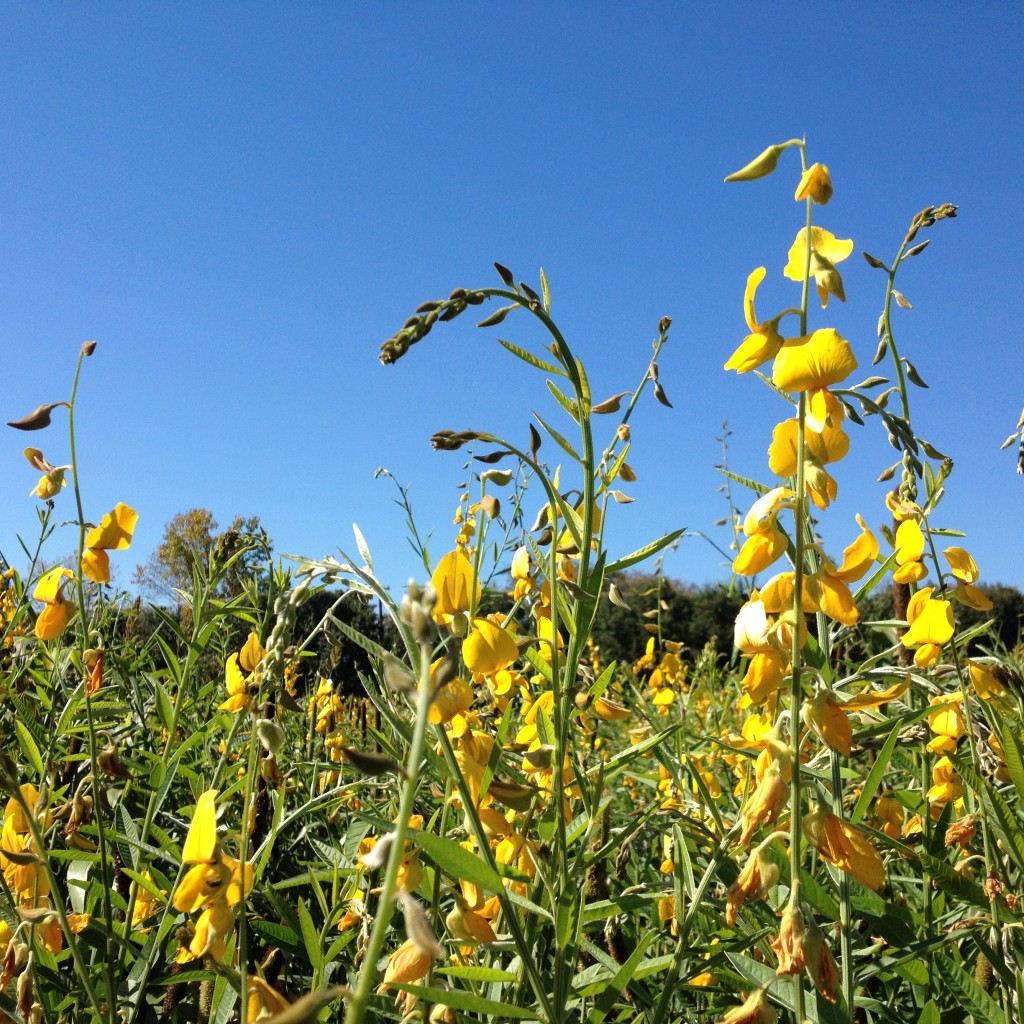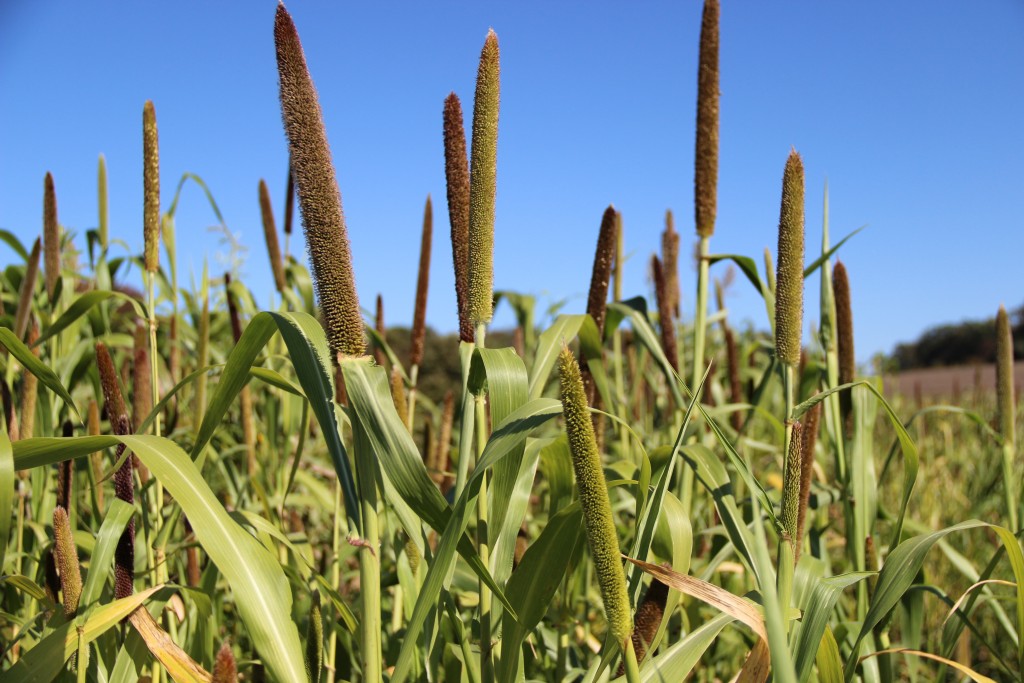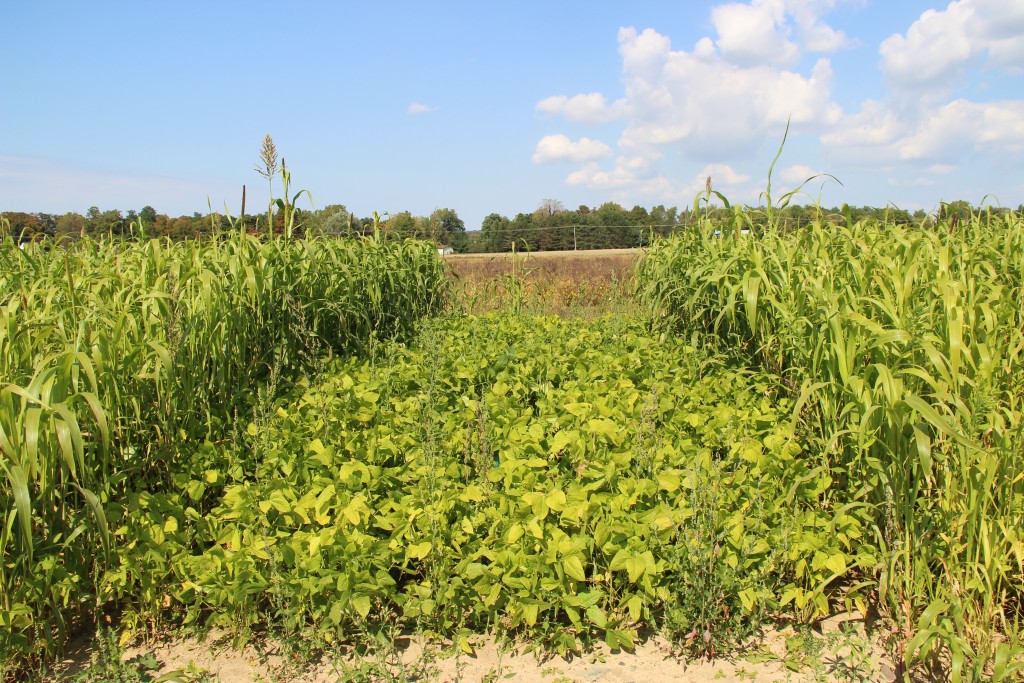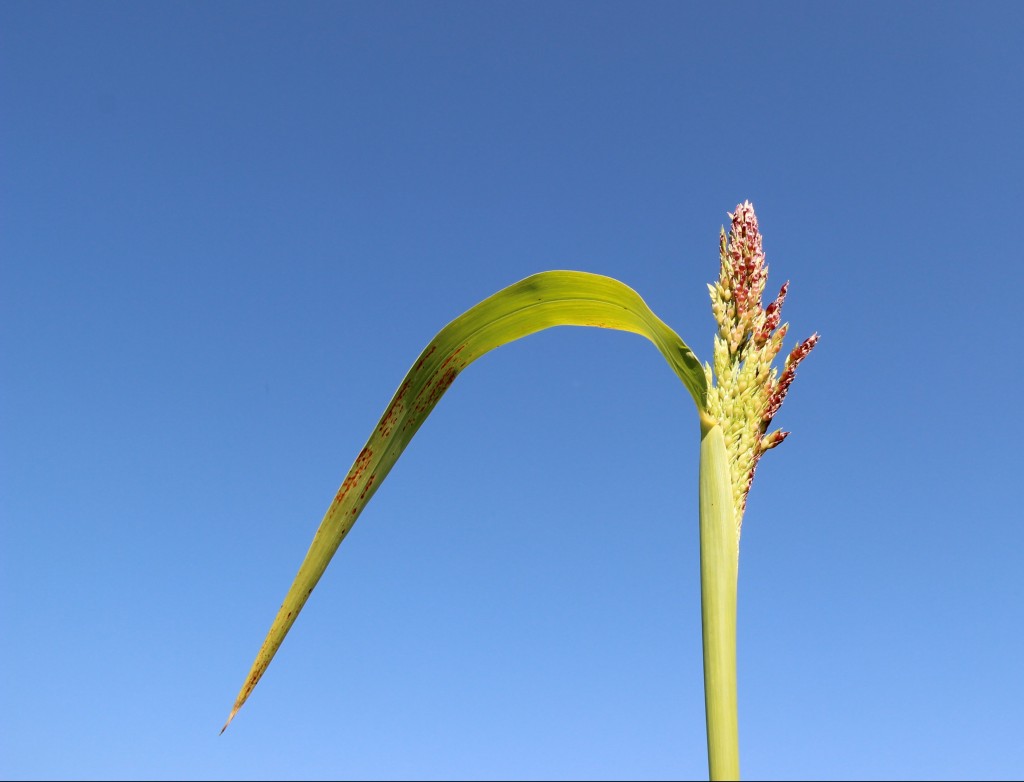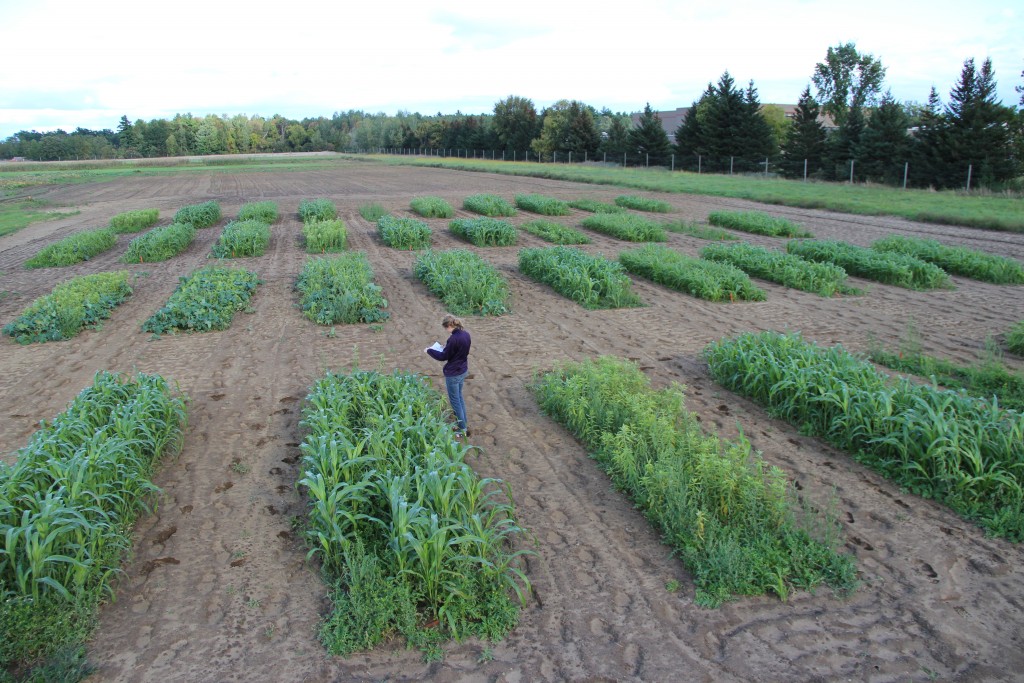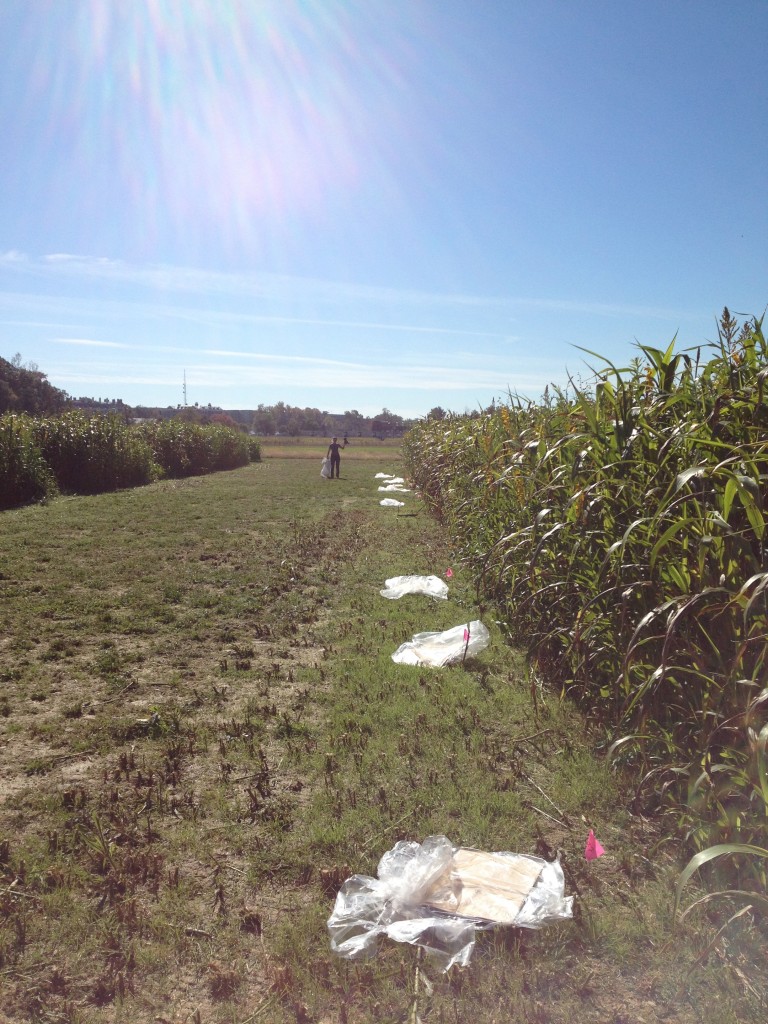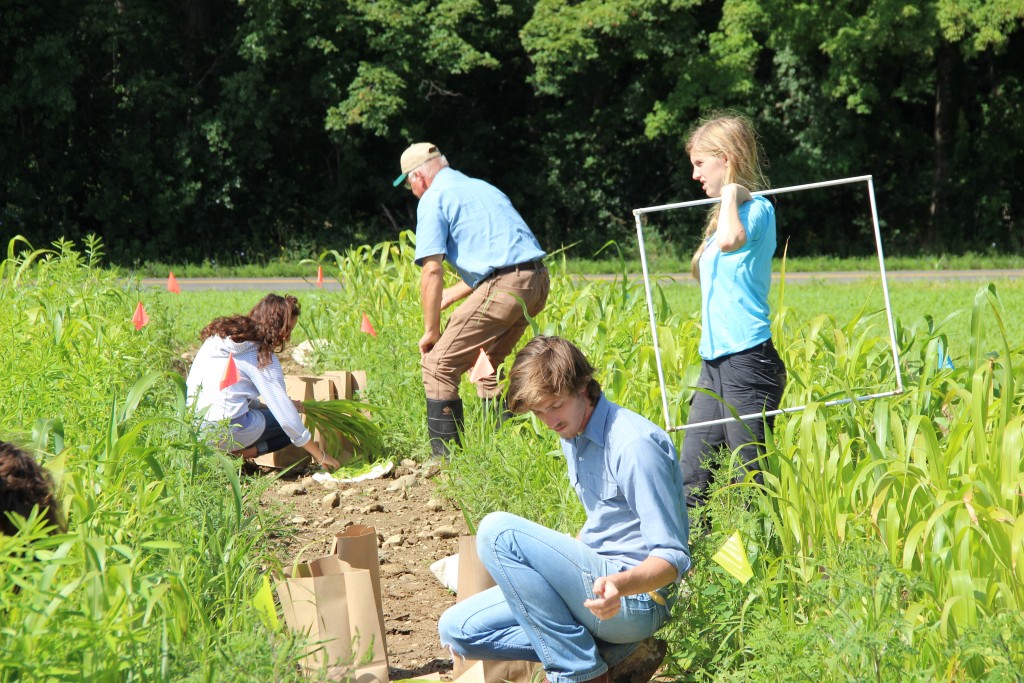Forage systems and diversity
Summer annual forage systems offer flexibility in their planting and harvest date and can act as “emergency forage” for livestock producers if corn or alfalfa fails. The goal of this work was to examine competition and inputs in various mixtures (“intercrops”) of four summer annual forage crops. By intercropping these forages together, we aimed to optimize their productivity and forage quality by allowing resource partitioning. Increased diversity should also increase resource use efficiency and allow for reduced fertilizer inputs, herbicides, and seed use.
We hypothesized that mixtures would yield more than monocultures, and that mixtures of grasses and legumes would have comparable yields and weed suppression compared to grass monocultures, but higher forage quality. We also hypothesized that niche differentiation (sharing resources in a complementary way) would be greater for species with different nitrogen acquisition traits than for species with different statures.
Identifying optimal seeding rate ratios
We combined two species in eight different ratios to examine biculture performance; we also combined all four species in varying combinations to look at performance of more complex mixtures. The species were sorghum sudangrass, pearl millet, sunn hemp and cowpea. Plantings were replicated in Aurora and Willsboro NY, and at the USDA Research Center in Beltsville MD.
Cover crops were planted with a no-till drill or cone-seeder in late June of 2013 and 2014. Halfway through the growing season we measured the density of each species in the mixtures, as well as weed density and species in the plots. At the end of the growing season (90 days after planting), we sampled final biomass to determine dry matter of cover crop species and weeds.
Results
Our main findings were that growing these cover crops in mixtures rather than in monocultures yielded more forage biomass. However, forage yields in the three- and four-species mixtures were not greater than the highest producing monoculture (pearl millet). Weed biomass decreased with increased number of forage species and yields of the more diverse mixtures were more stable across environments.


